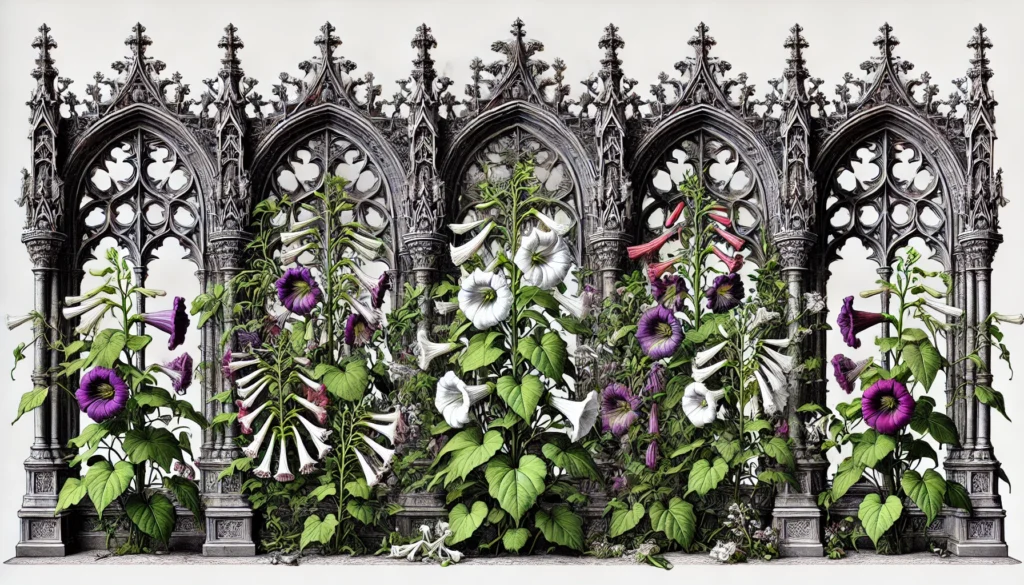

Home » Cat Plants » How the Morning Noon and Night Plant is a Hazard for Cats?

The Morning Noon and Night plant, also known as Yesterday-Today-and-Tomorrow, Kiss-Me-Quick, and Fransiscan Rain Tree, is a flowering shrub that can be highly toxic to cats if ingested. This plant, scientifically known as Brunfelsia species, is commonly found as an ornamental plant in gardens and homes.
While not causing an allergic reaction, the Morning Noon and Night plant contains brunfelsamidine, a toxic principle that can lead to severe symptoms in cats.
Ingestion may cause mild gastrointestinal upset, but is generally not life-threatening.
Ingestion can result in mild symptoms like vomiting, diarrhea, or drooling. Rarely fatal but may require veterinary care.
Eating these plants can lead to more pronounced symptoms like abdominal pain, lethargy, or difficulty breathing. Veterinary intervention may be necessary.
Ingesting even small amounts can cause severe symptoms like organ damage, seizures, or cardiac failure without rapid treatment.
All parts of these plants are extremely poisonous to cats and can quickly lead to death, even with immediate veterinary care.
** Please note: Please note that toxicity level can vary based on the amount ingested and the specific cat. It's always best to keep these plants completely inaccessible to cats and seek immediate veterinary care or call the poison hotline if you suspect your cat has ingested any part of a toxic plant.
If a cat ingests any part of the Morning Noon and Night plant, they may experience a range of concerning symptoms. These symptoms can appear within a few hours of ingestion and may last for several days.Common symptoms of Morning Noon and Night plant toxicity in cats include:
If you suspect your cat has ingested any part of this plant, it is crucial to seek veterinary care immediately.
When you bring your cat to the veterinarian with suspected Morning Noon and Night plant toxicity, they will follow a step-by-step process to diagnose and treat your feline friend.

A: Yes, the Morning Noon and Night Plant (Brunfelsia), also known as Yesterday-Today-and-Tomorrow Plant, is highly toxic to cats. It contains compounds like brunfelsamidine and scopoletin, which are harmful when ingested.
A: Symptoms of Morning Noon and Night Plant poisoning in cats include vomiting, diarrhea, drooling, seizures, muscle tremors, and in severe cases, paralysis or death.
A: Even small amounts of the Morning Noon and Night Plant can be highly toxic to cats due to the powerful compounds it contains. The entire plant is dangerous, including the flowers, leaves, and berries.
A: If your cat consumes any part of the Morning Noon and Night Plant, contact a veterinarian immediately. Emergency treatment may be necessary to manage the severe neurological and gastrointestinal effects.
A: Yes, if not treated promptly, Morning Noon and Night Plant poisoning can be fatal due to its effects on the nervous system and muscles. Early intervention is critical to prevent severe outcomes.
A: Yes, some safer alternatives include Spider Plants, Boston Fern, and Polka Dot Plant, which are non-toxic and safe for cats.
The Morning-Noon-and-Night plant, scientifically known as Brunfelsia pauciflora, originates from Brazil. Named for its color-changing flowers, it was first described botanically in the 19th century. European explorers introduced it to cultivation, spreading its popularity as an ornamental shrub.
Today, this plant remains prized for its unique blooms that transition from purple to lavender to white over three days. While beautiful, it’s known to be toxic, especially to pets. Its journey from Brazilian forests to global gardens showcases human fascination with plants that offer both beauty and intrigue.
Please note: The information shared in this post is for informational purposes only and should not be considered as veterinary medical advice.
🐾 A hilarious or heart-melting cat video
🐾 Our latest paws-on review of a cool cat toy